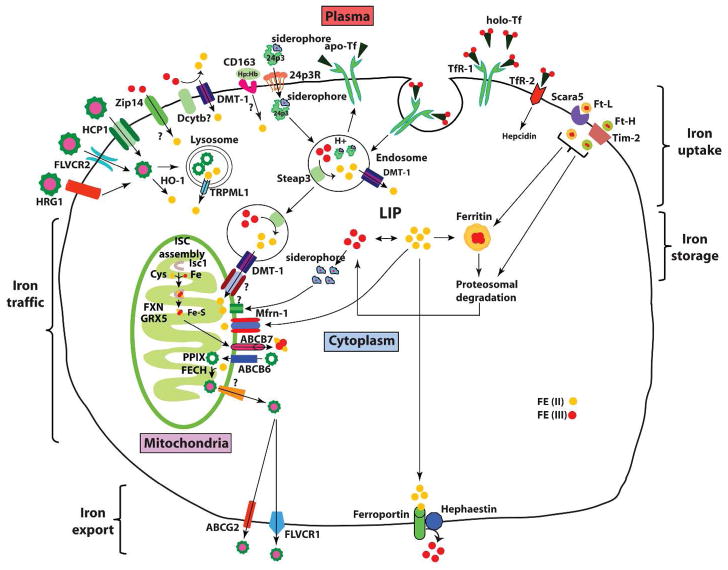Fig. 3.
Cellular iron metabolism. Most cells in the body obtain iron from circulating differic Tf. Iron-loaded holo-Tf binds to TfR1 on the cell surface and the complex undergoes endocytosis via clathrin-coated pits. A proton pump acidifies the endosome resulting in the release of Fe3+, which is subsequently reduced to Fe2+ by Steap3 and transported across the endosomal membrane to the cytosol by DMT1. DMT1 also facilitates dietary iron absorption. Apo-Tf is recycled back to the cell surface and released from TfR1 to plasma to repeat another cycle. Newly acquired iron enters into cytosolic “labile iron pool” (LIP), which is redox-active. LIP is chelated by intracellular siderophore that facilitates intracellular iron trafficking to mitochondria via an unknown receptor for metabolic utilization (such as synthesis of heme and iron-sulfur clusters), and cellular iron that is not utilized is either stored in ferritin or exported via ferroportin. Cells also export iron contained in ferritin and heme.

